
Closeup of flower ( c. 20 mm in diameter) Insectivorous Plant, Avocado Plant, Sensitive Plant
Letting a Venus flytrap flower can exhaust the plant, becoming sluggish and droopy once the flowers have bloomed. "If you have a larger flytrap, you can let it flower. If it is smaller than three inches or so, I recommend pinching off the flowers before they get tall," says Ribbecke. "Flowering usually diverts energy from making the traps, so.

Venus Flytrap Flower
Venus Flytrap Flowers & Seeds. Fully grown Venus Flytraps flower in Spring, but unless you intend to harvest seed, you should cut off the flower stalk once it's reached about 5 cm tall. Flowering can be exhausting for Venus Flytraps, and most plants will grow more vigorously during summer if prevented from flowering.
Venus Fly Trap Flowering Help r/carnivorousplants
Overview. Year 1: Germination and seedlings. Venus fly traps take 4-6 weeks to germinate. Seedlings have the exact shape as adult Venus flytraps, but just very tiny. The growth accomplished in the first year is dependent on the environment, enough light and water are critical factors. Year 2: Continuous Growth.

40pcs/set VENUS FLY TRAP Dionaea Muscipula CARNIVOROUS Flower Seeds rarely seen eBay
Yes, absolutely, your Venus Flytrap can and will flower if it's feeling good and happy. These carnivorous charmers don't just stop at snapping up bugs—they go the extra mile and put on a little floral show too. The flower stalk shoots up from the center of the plant, standing tall and proud.
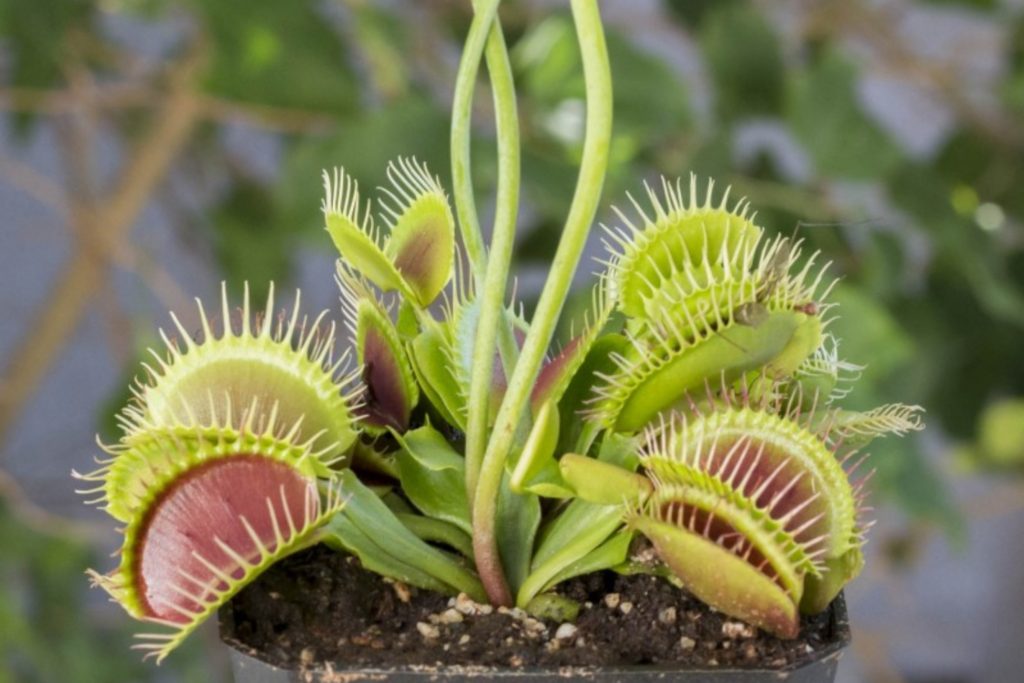
Should You Let the Venus Flytrap Flower
Light for Venus flytraps. Venus flytraps require a lot of light. They should receive at least 4 hours of direct sunlight a day with 6 to 8 hours being ideal. It is best to grow your Venus flytrap plant outside where it can get plenty of sun and catch its own food. It isn't necessary to feed a Venus flytrap anything other than sunlight and water.

Venus Flytrap San Diego Zoo Animals & Plants
The ideal pH for a Venus fly trap is in the acidic range of 4.9 to 5.3 (most normal plants and vegetables prefer a more neutral range of pH 5.8 to 7.2). Another mixture combination that is preferred by some fly trap growers is five parts sphagnum peat moss, three parts silica sand, and two parts perlite.
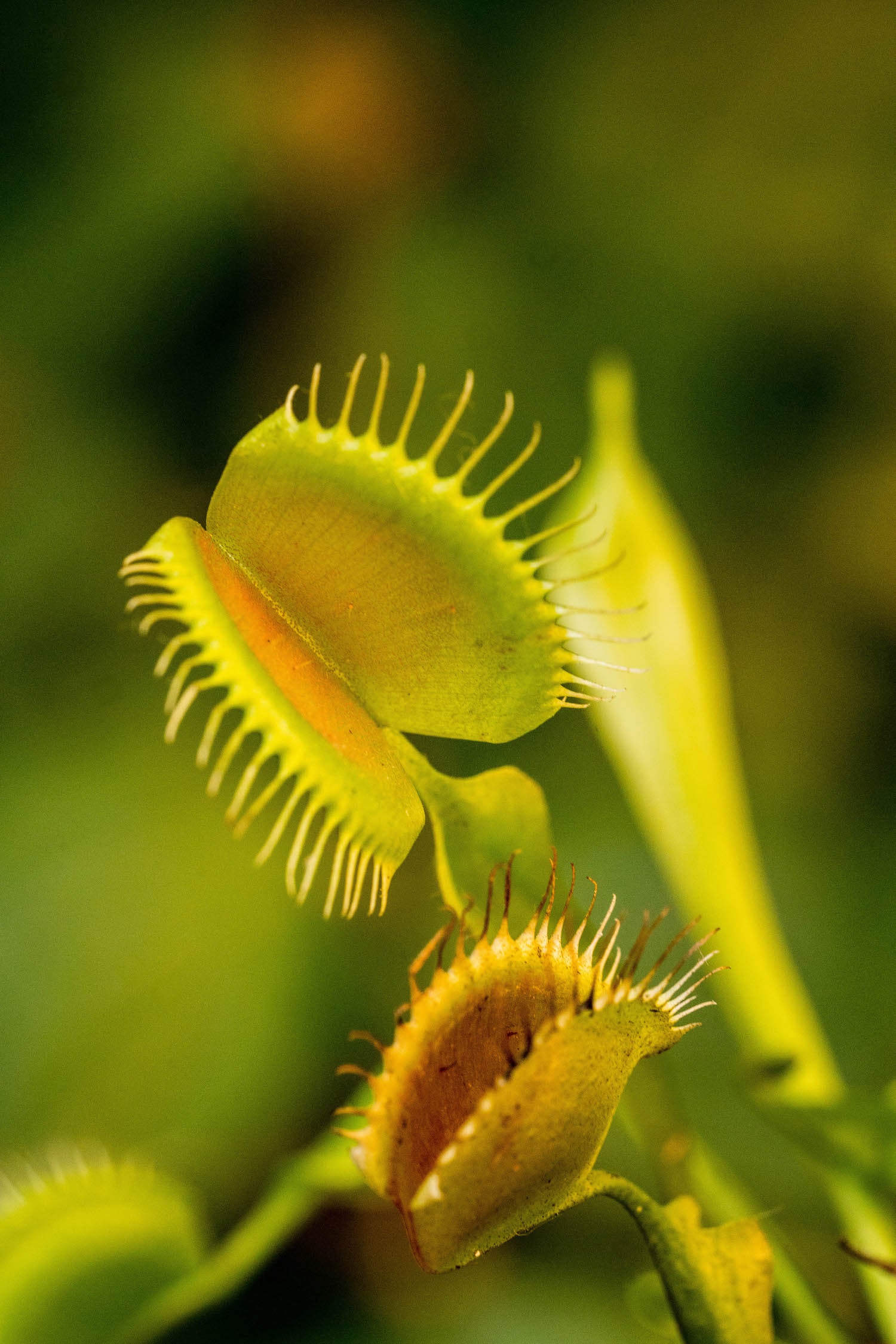
Venus Flytrap Flower Essence LOTUSWEI
Venus fly traps thrive in wet, acidic, nutrient-poor soil. You can create that indoors with a 1:1 mixture of peat moss and perlite. A combination of soil mix with peat moss, or horticultural sand with an equal amount of peat moss also works well. Wood-based materials such as bark, sawdust, or wood fiber are good sustainable alternatives to peat.
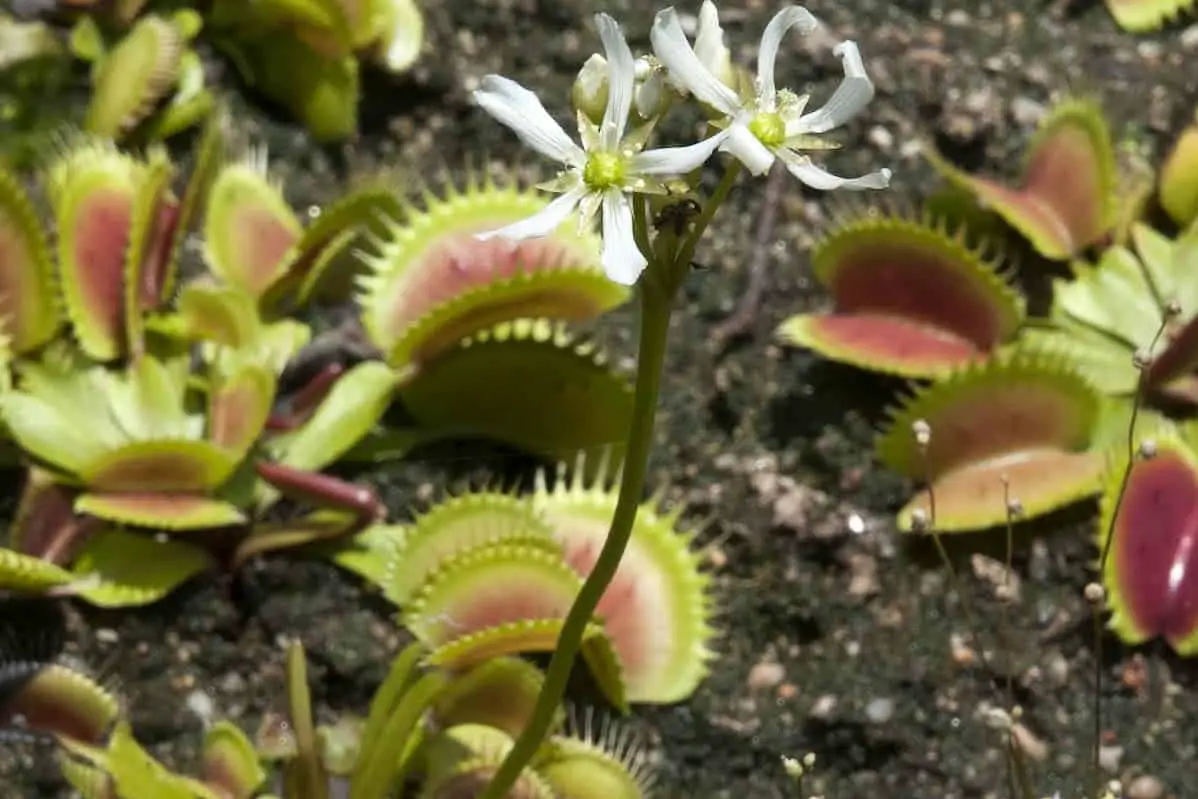
Carnivore Garden Drawbacks to Allowing Your Venus Flytrap to Flower Carnivore Garden
Venus flytrap can be propagated by seeds, leaves, flower stalks, or tissue culture (this is how all those cultivars were invented). We'll cover flower stalk propagation together, step by step. (You can also just let your plant grow, since Venus flytraps propagate naturally as they mature, and separate the new plant by division when it's got.

Venus Fly Trap (Dionaea Muscipula) Plants from Gardeners Dream UK
These are the instructions for Venus flytrap stalk propagation: Find a plastic or glazed ceramic pot with drainage. Also, gather a tray or plate to place under the pot. Make some carnivorous plant soil with proper aeration and drainage. For example, a 2:1 ratio of peat moss and perlite is a common and effective choice.
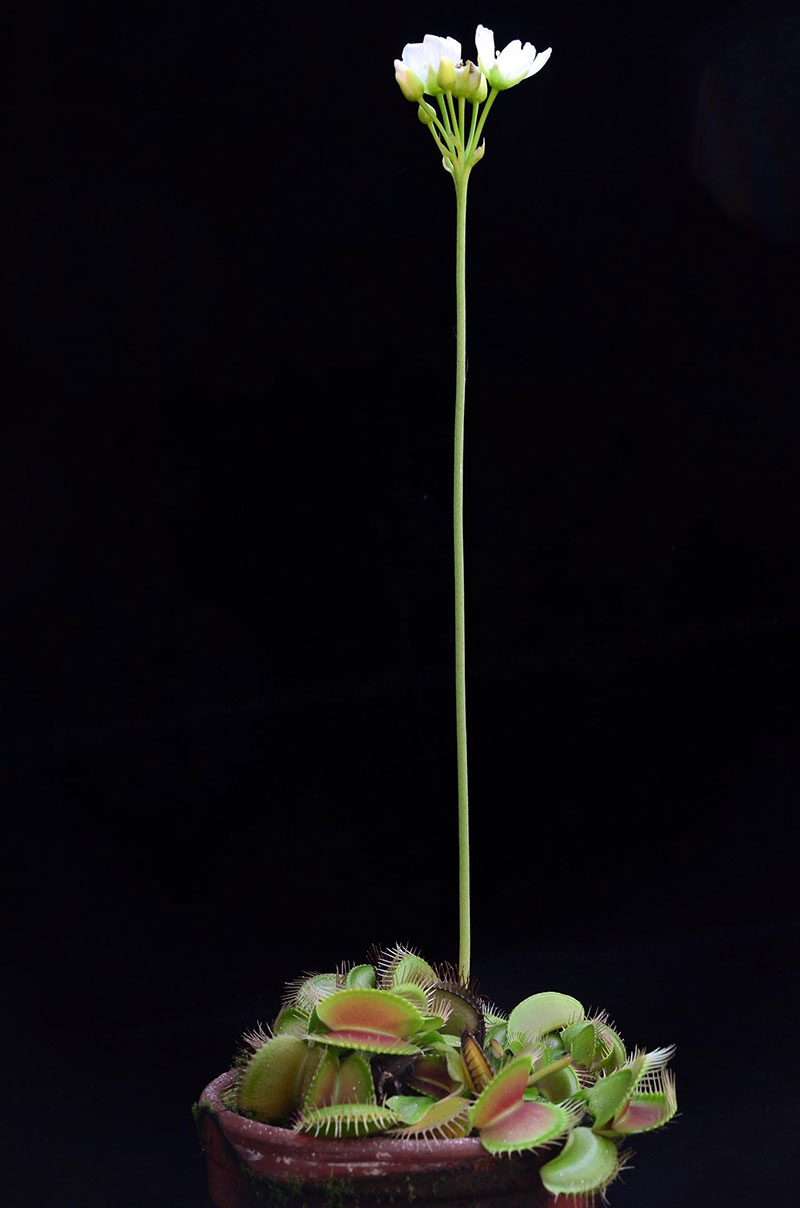
Flowering Venus Fly Trap? 9 Best
When you receive a Venus flytrap, pot it in a small, deep pot using a recommended potting medium, such as one-third perlite and two-thirds peat moss. The depth of the pot encourages root growth, as does tray watering, so choose a minimum of a 4-inch-deep pot that has a drainage hole and a tray. Deeper is even better.

Venus flytrap Description, Mechanism, Adaptations, Habitat, Diet, & Facts Britannica
The Venus flytrap, or Dionaea muscipula, is a carnivorous plant that still baffles and fascinates scientists and botanists today. Its trapping structure is its key distinctive feature and is what gives it its menacing name.. Venus flytrap flower. Venus flytraps are perennials — meaning they bloom again each year. Their flowers are white.
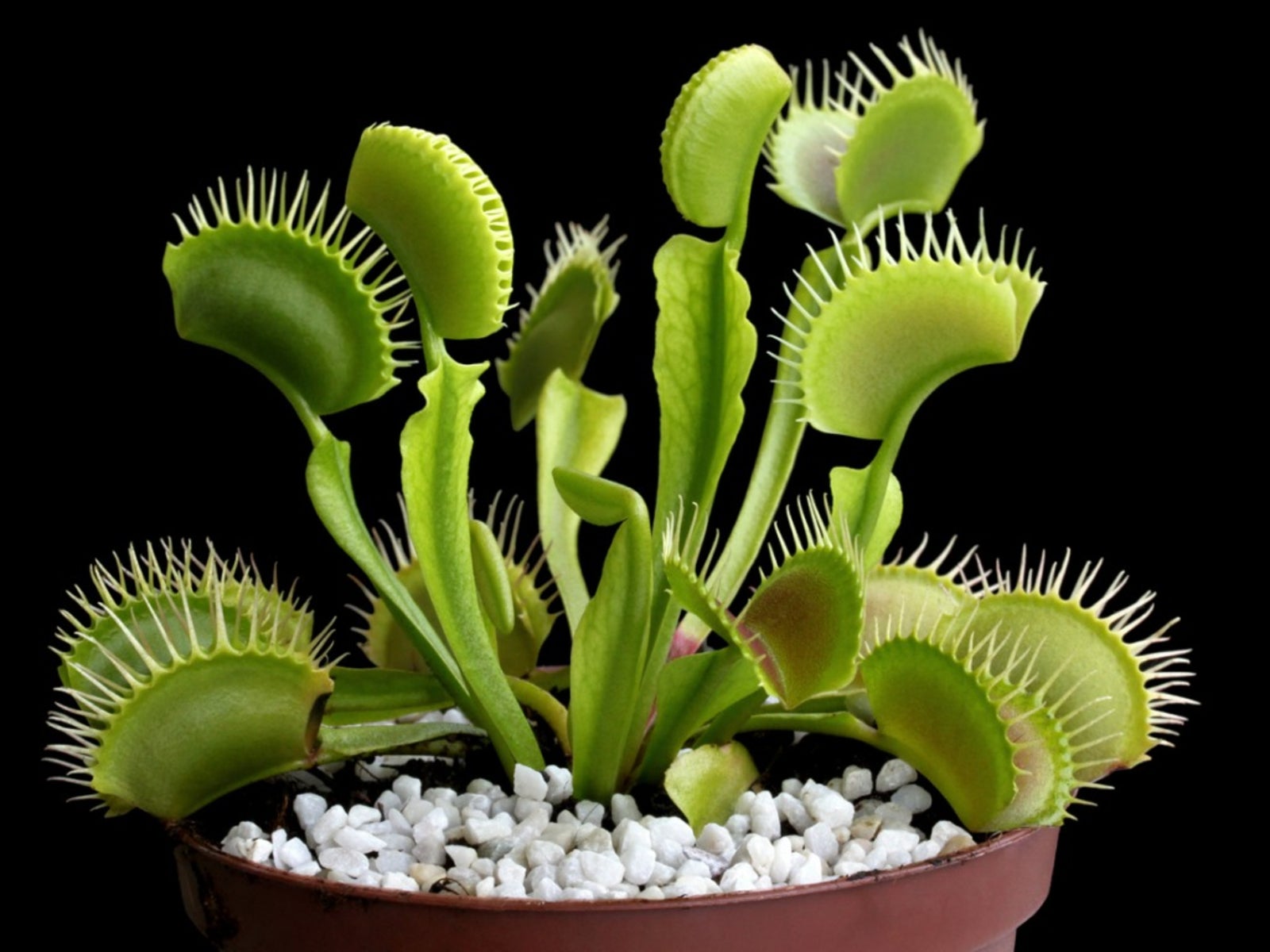
Venus Fly Trap Care How To Grow A Venus Fly Trap
Pollinated flowers eventually give rise to seeds. Each trap on the plant can only open and close several times before it dies and falls off. Then the plant produces a new trap from its underground stems. The lifespan of the Venus flytrap isn't known for certain, but it's been estimated to live up to 20 years and possibly longer.

group of venus fly traps..Need one...these are so cool Venus fly trap, Carnivorous plants
Yes, this plant produces flowers, completely seperate from its traps. Venus Flytraps are easy indoor plants and are easy to care for. Healthy, happy plants can live for several years, keeping insects at bay. After about 2 years, yes, the Venus Flytrap can produce flowers.

How To Grow & Care For A Venus Fly Trap Horticulture.co.uk
The best time of year to re-pot a Venus fly trap is in the Spring, as this is when the plant is at its most resilient and most likely to survive any transplant shock. Do not re-pot Venus fly traps in the Fall or Winter when the plant is dormant.. Remove the Venus Fly Traps Flowers in the Spring . Small white flowers often emerge in.
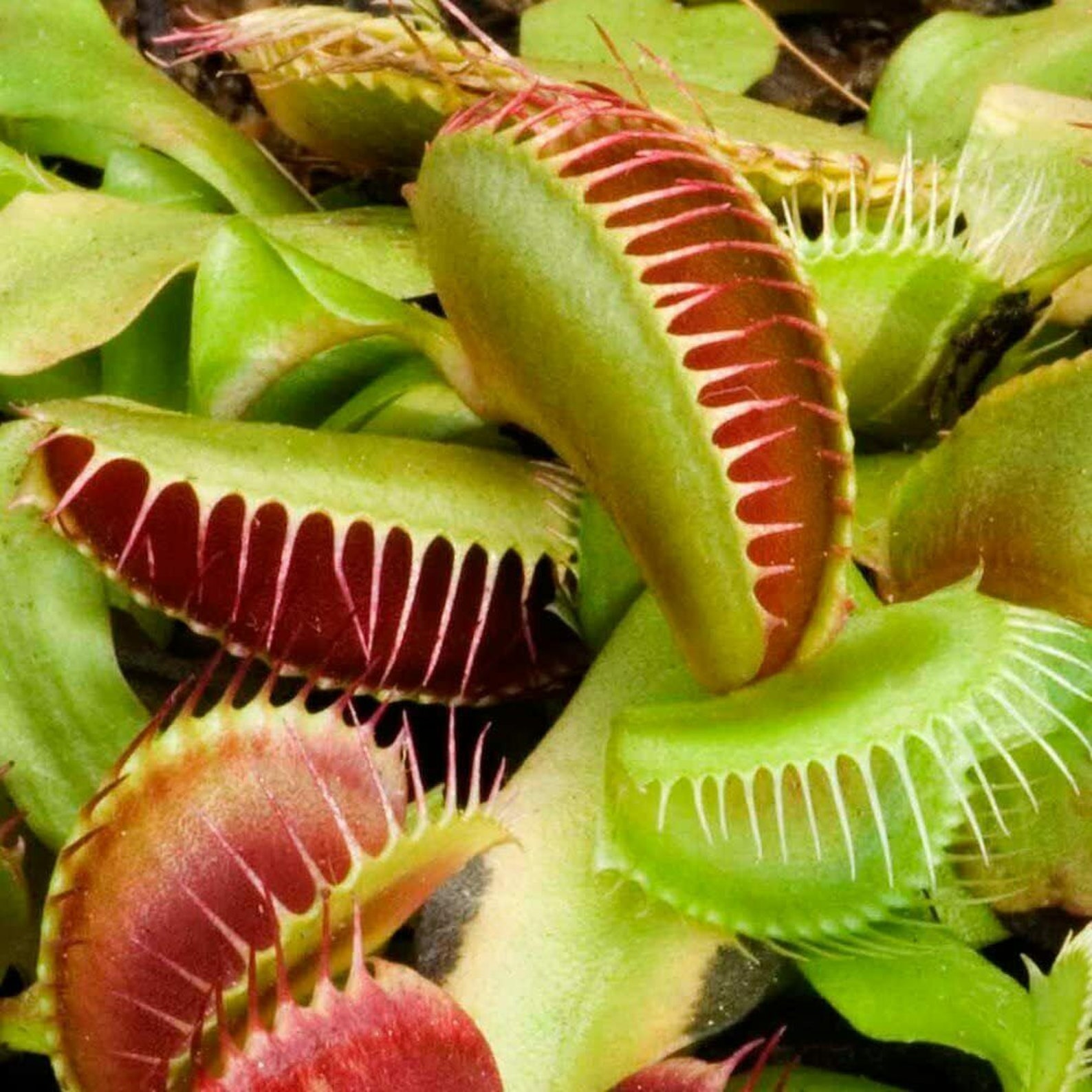
Venus Fly Trap Dionaea Muscipula Carnivorous Indoor Plant Red Etsy
Venus fly traps do not need fertilising. Instead, feed fortnightly with live insects. Simply catch an insect such as a fly and then gently lower it into one of the traps, using tweezers. As soon as the fly comes into contact with the fine hairs in the trap, the trap will close. Do not force the trap shut - this can harm the plant.

Venus flytrap ‘King Henry’ for sale Carnivorous Plant Resource
How to Grow Venus Flytraps. Grow Venus flytraps in pots with peat moss and perlite, at a 2:1 ratio, to maintain them. For optimum development, place in a sunny windowsill. Soil is kept moist all of the time because of the water. Keep the plant in a cool environment with little or no direct sunlight during the winter.